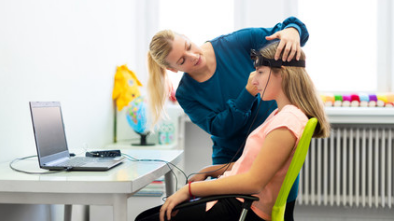8 Neurofeedback Frequently Asked Questions
Neurofeedback has been around for decades. However, it is just now gaining traction. There have been many studies to show its effects and just how well it works for many different conditions. Potential clients and current clients tend to ask me similar questions. To help spread awareness and knowledge, below is a list of eight frequently asked questions about neurofeedback and our answers.
1. WHAT IS NEUROFEEDBACK?
Neurofeedback/Biofeedback therapy is a process in which a client learns to monitor and regulate the mind and body in ways that promote mental and physical health and well-being. Initially, this is done with the assistance of a clinician and special equipment. This equipment includes sensors that monitor respiration, heart rate, skin temperature, muscle tension, and brain waves. Eventually, the client may learn to monitor and regulate independently without equipment.
2. WHAT CONDITIONS SHOULD NOT DO NEUROFEEDBACK OR SUPPLEMENTAL DEVICES?
There are a few conditions in which Neurofeedback should not be utilized, but this should always be discussed with your health provider, and all sessions should be provided by a specialized, certified professional.
Supplemental devices are not recommended for seizures, migraines, or if you have an internal device. However, you may use them at your discretion. We just do not recommend them for these conditions.
3. WHAT ARE SUPPLEMENTAL DEVICES?
Supplemental Devices are devices to train your brain at home! They are easy to use and can provide similar results as neurofeedback. Contact us or browse equipment here to learn more.
4. DO I HAVE TO DO BOTH?
Absolutely not! However, you will see your best results by doing neurofeedback sessions and using a supplemental device at home.
5. WHAT HAPPENS DURING A NEUROFEEDBACK SESSION?
Neurofeedback sessions involve relaxing for 30 minutes while you watch a movie or listen to music of your choice. Electrodes are attached to your scalp that monitors your brainwaves during the session. When irregular patterns are detected, a response is triggered from the software that pauses or dims the video or music. This response will automatically cause you to focus more, which will move your brainwaves back into normal ranges. With repetition of this process over multiple sessions, your brain can learn to stay within healthy ranges on its own without neurofeedback.
6. CAN NEUROFEEDBACK HELP WITH ADHD?
Recent research suggests that individuals with ADHD tend to have elevated theta brainwave activity and low levels of beta brainwave activity. Symptoms of ADHD are usually reduced when brainwave activity is changed. Neurofeedback is commonly used as an adjunct or alternative treatment to medication and behavior management.
7. COULD YOU EXPLAIN MORE ABOUT BRAINWAVES?
Your brain produces four primary types of brain waves: Beta, Alpha, Theta, and Delta. Beta is primarily active during your awake state, which is most of your day. Alpha has to do with your subconscious and is dominant during relaxed states when your eyes are closed, but you are not asleep. Theta is present briefly during the periods before you fall asleep and before you fully wake up. Delta is primarily active when you are sleeping. These brain waves are equally important to your health, and neurological disorders can be attributed to specific brain waves. For example, when you have brain irregularities caused by a head injury, your brain may have too much frontal theta or delta being produced when you are supposed to be awake and alert. Retraining these abnormal patterns in the affected areas can improve or eliminate symptoms.
8. A BRAIN MAP (QEEG) SOUNDS SCARY. DOES IT HURT?
Absolutely not! A brain map, also known as a QEEG, is simply a surface scan of your scalp that picks up the electrical impulses we call brainwaves. We do use conductive paste, but there are no shocks, no pain, and no discomfort. All you do is stare at the wall for six minutes with your eyes open and six minutes with your eyes closed. The computer does the rest!


